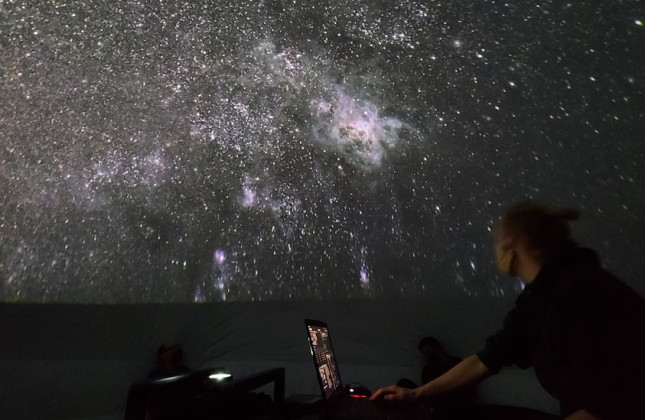Stargazing Live! is a planetarium show with accompanying lesson materials about the transient universe. The universe is not static and it is constantly changing – objects evolve, move or change in brightness. But what exactly is changing and how do astronomers, for example, hunt for supernovae and gravitational waves from collisions of neutron stars?
Stargazing Live! is a collaboration between the Dutch MeerLICHT and BlackGEM telescopes and the Netherlands Research School for Astronomy (NOVA) and is funded by the National Research Agenda (NWA) of the Dutch Research Council (NWO). The project brings semi-live data from the telescopes to schools in a special programme developed for the NOVA Mobile Planetarium. In addition to an inspiring planetarium show and a special planetarium film, the pre-university physics students will be challenged with teaching activities developed in collaboration with researchers from the Denker project of the Smart Education lab of the Amsterdam University of Applied Sciences.
Students go on a journey of discovery in the transient universe, learning about the properties of all types of variable phenomena using real scientific data. The lessons are linked to the Dutch physics curriculum (topic include electromagnetic radiation and matter/natural laws and modelling).
Project Denker and NOVA staff have jointly developed three teaching activities in which (pre-university physics) students learn about stars through interactive system diagrams. Students work in the Dynalearn software package (https://www.dynalearn.nl/) and are led step-by-step in building a system model representation using knowledge representations. Students learn to distinguish symbols (e.g. entities and quantities) and create causal chains with positive and negative relationships. By creating the system diagram (e.g. of the balance between gravity and fusion in a star) and simulating the model with different initial situations, students learn to understand the behaviour of the system. Each lesson activity can be completed in around 1.5-2 hours.
The lessons can be downloaded from the DynaLearn website under 'Lessons - Physics/Astronomy - NOVA'). Direct links to the lesson plans and online environment (EN):
Lesson 1 - Properties of stars
Lesson 2 - Star states
Lesson 3 - Balance in a star
The lessons are available in English and Dutch.
For more information about the planetarium shows and lesson activities, send an email to nova@astronomie.nl and include 'Stargazing Live!' in the email title.
